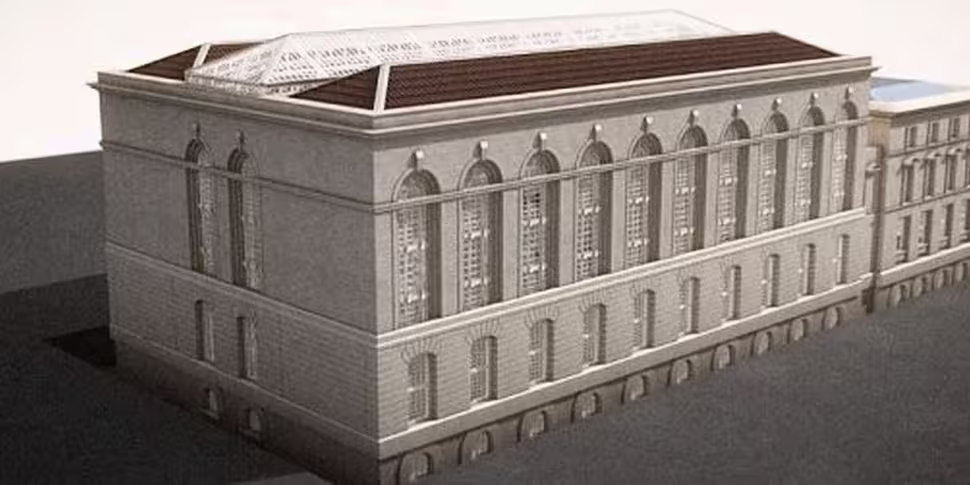A project to digitally recreate the building and contents of the Public Record Office of Ireland has been announced by Trinity College Dublin.
The office was destroyed by fire at the Four Courts at the outset of the Irish Civil War.
The project has the potential to transform how we understand Ireland's past, and could be of great interest to the Irish Diaspora and anyone tracing their Irish roots.
It is estimated that up to 70 million people around the world claim Irish ancestry and heritage.
When the Four Courts went up in flames on June 30th 1922, seven centuries of Irish historical and genealogical records were lost.
They were stored in a six-storey Victorian archive building, known as the Record Treasury.
The interiors of Public Record Office of Ireland before the 1922 blaze VS the 3D recreation | Image via @beyond_2022 on Twitter
Among them were hundreds of thousands of English government records concerning Ireland, dating back to the 13th century.
This included births, marriages and deaths, wills, maps, parish registers and town records from across the island.
However new technology, historical research and archival practice mean that these losses are not irrecoverable.
Historians and computer scientists at Trinity have unveiled plans to bring Ireland's Public Record Office back to life by creating a 3D virtual reality reconstruction of the destroyed building and refilling its shelves with fully-searchable surviving documents and copies of the lost records.

Image: Trinity College Dublin
These have been identified by the team in archives and libraries around the world.
Orgsanisers say the project will bring millions of lost historical and genealogical facts to a global audience, and will allow historical research to reach back four centuries earlier than most currently available genealogical resources.
'Beyond 2022: Ireland’s Virtual Record Treasury' was launched Thursday at an event in the Trinity Long Room.
It is led by the School of Histories and Humanities and the ADAPT Centre for Digital Content Technology in the School of Computer Science and Statistics.

The Four Courts ablaze in 1922 | Image: Trinity College Dublin
The project is a collaboration with Trinity’s four archival partners: The National Archives of Ireland, The National Archives (UK), The Public Record Office of Northern Ireland and The Irish Manuscripts Commission.
It is funded by the Irish Research Council.
A project website was also launched, which demonstrates the scope of the project and technology involved.
This includes an animation of the 3D model being developed - and it will also see the full catalogue available to the public for the first time since 1922.
When complete, users of Ireland’s Virtual Record Treasury will experience a "fully immersive virtual tour" of the digitally reconstructed Public Record Office.

Damage after the fire | Image: Trinity College Dublin
They will be able to enter a 3D virtual reality reconstruction of the destroyed building and request a historical document in the Victorian Reading Room.
Users will then be able to enter the destroyed Record Treasury itself where the records were held, and move through its 100,000sq ft of archive shelving.
A glimpse into your genealogy? Exploring the archives - virtually. #beyond2022 #Genealogy @TLRHub @AdaptCentre @IrishResearch #LoveIrishResearch pic.twitter.com/9pk3tvfNee
— Beyond 2022 (@beyond_2022) February 8, 2018
Dr Patrick Prendergast, Provost of Trinity College, said: "Ireland's Virtual Record Treasury will be a public and academic resource with global reach and impact.
"This international, collaborative project makes a significant contribution to the national commemorative effort by reuniting collections destroyed by war. It forms part of our strategic research theme ‘Making Ireland’ - a transformative collaboration in Irish studies.
"By reconstructing a lost treasure, Trinity is seeking to create a lasting and meaningful legacy and an invaluable resource for researchers and educators at all levels which will continue to grow beyond 2022.
"By moving beyond the divisive legacy of the period, the project will also reopen Ireland’s deeper past to the general public at home and in the wider Diaspora."










